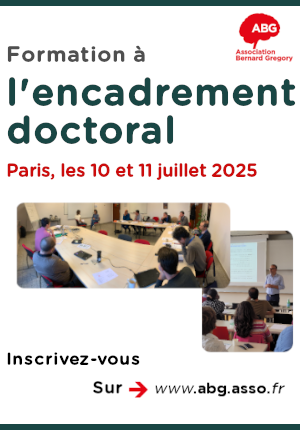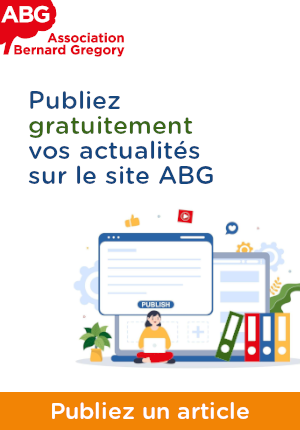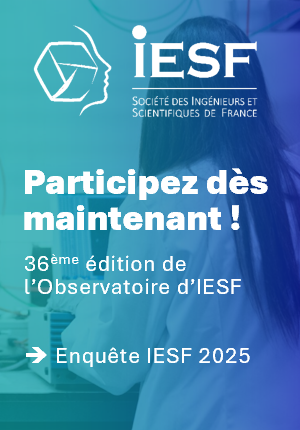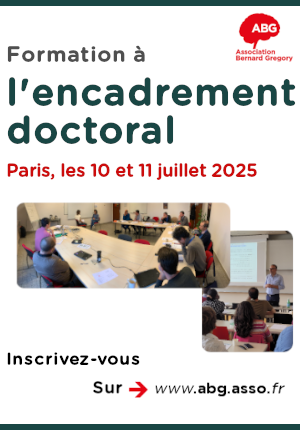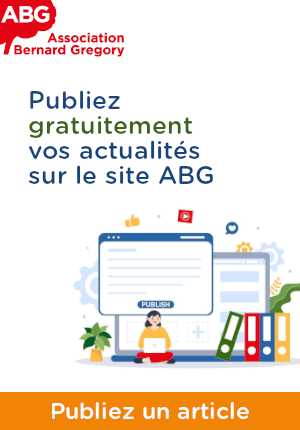Des interactions symbiotiques dans les récifs coralliens à l'inspection des éoliennes en mer : génération et optimisation de trajectoires bio-inspirées pour des véhicules sous-marins autonomes // From Symbiotic Interactions in Coral Reefs to Offshore Wind
|
ABG-131081
ADUM-59250 |
Thesis topic | |
| 2025-04-16 | Public funding alone (i.e. government, region, European, international organization research grant) |
Université de Montpellier
Montpellier cedex 5 - France
Des interactions symbiotiques dans les récifs coralliens à l'inspection des éoliennes en mer : génération et optimisation de trajectoires bio-inspirées pour des véhicules sous-marins autonomes // From Symbiotic Interactions in Coral Reefs to Offshore Wind
- Computer science
robotique sous-marine, trajectory planning, bio-inspiration, modélisation
marine robotics, trajectory planning, bio-inspiration, modeling
marine robotics, trajectory planning, bio-inspiration, modeling
Topic description
Les changements climatiques drastiques affectant la planète suscitent un intérêt particulier de la part de la communauté scientifique. Pour tenter de limiter ces effets, les experts ont proposé le développement d'énergies renouvelables, plus respectueuses du climat que les énergies fossiles. Parmi elles se distinguent l'éolien en mer. Pour garantir leur bon fonctionnement à long terme, les éoliennes nécessitent inspection et maintenance régulières, généralement réalisées par des robots sous-marins téléopérés (ROVs) ou autonomes (AUVs).
L'objectif des activités d'inspection est de détecter les défauts, les dégradations des structures, en vue de mettre en œuvre des actions préventives ou correctives. Bien que de nombreux travaux de recherche soient rapportés dans la littérature scientifique sur ce sujet, un aspect fondamental lié à la réussite de ces missions est la planification d'une trajectoire pour le robot, assurant que ce dernier accomplisse efficacement son inspection.
Dans ce contexte, l'objectif de cette thèse est de développer des algorithmes pour la planification de trajectoires, ainsi que des lois de commande, qui garantissent la faisabilité de l'inspection. Pour ce faire, ces algorithmes doivent prendre en compte les perturbations environnementales (courant, vagues…) et les contraintes inhérentes à la structure (géométrie, présence de lignes de mouillage…).
Ce projet considérera les étapes suivantes, constitutives d'une mission d'inspection :
1) Le chemin initial du point de départ (navire) à la structure (éolienne).
2) L'approche optimale et sûre de la structure.
3) Les manœuvres (dynamiques ou stationnaires) nécessaires à l'inspection.
4) Planification de l'itinéraire optimal de retour.
5) L'optimisation de la trajectoire d'approche du robot pour faciliter sa récupération par le navire.
Les exigences en matière de trajectoire et de comportement sont différentes pour chaque étape de la mission. Afin de les couvrir efficacement, la solution proposée s'inspirera du comportement observé dans l'interaction symbiotique entre les requins, les rémoras et les larves que l'on trouve dans les récifs coralliens. Par exemple, le requin, après avoir détecté le sang d'un poisson blessé, planifie sa trajectoire en fonction de cette trace et, une fois proche de sa proie, il exécute une trajectoire d'encerclement jusqu'à ce qu'il juge opportun d'attaquer. Au cours de ce processus, le rémora voyage ancré au corps du requin, tout en se nourrissant des bactéries de la peau du requin et en bénéficiant d'un transport 'gratuit'. Avant de s'ancrer sur le corps du requin, le rémora doit l'identifier et adapter son approche en fonction du comportement du squale. Nous nous inspirerons de cette stratégie d'approche pour générer des trajectoires optimales d'approche de l'éolienne ou du bateau. Pendant la phase d'inspection, les trajectoires s'inspireront du processus de chasse aux bancs de petits poissons par les requins. Ce processus consiste à effectuer des trajectoires d'encerclement des poissons afin de faciliter la capture du plus grand nombre. De même, la manière dont les rémoras sont attachés au corps du requin sera prise en compte pour créer des stratégies d'inspection nécessitant une position fixe. Pour revenir au point de départ, les poissons de récifs et leurs larves tirent profit des conditions environnementales pour minimiser leur dépense énergétique. Ce comportement sera source d'inspiration pour le retour du robot à son point de départ. Pour éviter les obstacles, différentes approches seront utilisées, car les rémoras et les larves effectuent ce type d'action en fonction des prédateurs ou de l'évolution des conditions environnementales.
Alors que les comportements isolés de ces espèces ont servi d'inspiration pour générer des algorithmes d'optimisation, une telle synergie n'a pas été utilisée pour la génération de trajectoires optimales de robots sous-marins.
------------------------------------------------------------------------------------------------------------------------------------------------------------------------
------------------------------------------------------------------------------------------------------------------------------------------------------------------------
Drastic climate changes affecting the planet are of particular interest to the scientific community. To mitigate these effects, experts have proposed the development of renewable energy sources, which are more climate-friendly than fossil fuels. Among these, offshore wind energy stands out. To ensure their long-term operational efficiency, wind turbines require regular inspection and maintenance, typically carried out by remotely operated (ROVs) or autonomous underwater vehicles (AUVs).
The objective of these inspections is to detect defects and structural degradations, with the goal of implementing preventive or corrective measures. While extensive research on this subject is reported in scientific literature, one fundamental aspect that contributes to the success of these missions is trajectory planning for the robot, ensuring that it performs its inspection efficiently.
In this context, the aim of this thesis is to develop trajectory planning algorithms, as well as controllers, that guarantee the feasibility of the inspection. To do so, these algorithms must take into account environmental disturbances (currents, waves, etc.) and constraints inherent to the structure (geometry, presence of mooring lines, etc.).
This project will consider the following steps, constitutive of an inspection mission:
The initial path from the starting point (vessel) to the structure (wind turbine).
The optimal and safe approach to the structure.
The dynamic or stationary maneuvers required for inspection.
Planning of the optimal return route.
Optimization of the robot's approach trajectory to facilitate its recovery by the vessel.
The requirements in terms of trajectory and behavior differ for each stage of the mission. To address them effectively, the proposed solution will draw inspiration from the behavior observed in the symbiotic interactions between sharks, remoras, and larvae found in coral reefs. For example, a shark, after detecting the scent of a wounded fish, plans its trajectory based on this trail and, once close to its prey, executes a circling trajectory until it deems the moment optimal to attack. During this process, the remora travels anchored to the shark's body, feeding on bacteria from the shark's skin and benefiting from 'free' transportation. Before anchoring onto the shark's body, the remora must identify it and adapt its approach based on the shark's behavior. We will draw from this approach strategy to generate optimal approach trajectories for the wind turbine or vessel. During the inspection phase, the trajectories will be inspired by the hunting process of schools of small fish by sharks. This process involves executing circling trajectories around the fish to facilitate capturing the greatest number. Similarly, how remoras attach to the shark's body will inspire strategies for inspections requiring a fixed position. To return to the starting point, reef fish and their larvae exploit environmental conditions to minimize their energy expenditure. This behavior will inspire the robot's return trajectory to its starting point. Different approaches will be used to avoid obstacles, as remoras and larvae perform such actions based on the presence of predators or changing environmental conditions.
While the isolated behaviors of these species have inspired optimization algorithms, such synergy has not yet been applied to the generation of optimal trajectories for underwater robots.
------------------------------------------------------------------------------------------------------------------------------------------------------------------------
------------------------------------------------------------------------------------------------------------------------------------------------------------------------
Début de la thèse : 01/10/2025
L'objectif des activités d'inspection est de détecter les défauts, les dégradations des structures, en vue de mettre en œuvre des actions préventives ou correctives. Bien que de nombreux travaux de recherche soient rapportés dans la littérature scientifique sur ce sujet, un aspect fondamental lié à la réussite de ces missions est la planification d'une trajectoire pour le robot, assurant que ce dernier accomplisse efficacement son inspection.
Dans ce contexte, l'objectif de cette thèse est de développer des algorithmes pour la planification de trajectoires, ainsi que des lois de commande, qui garantissent la faisabilité de l'inspection. Pour ce faire, ces algorithmes doivent prendre en compte les perturbations environnementales (courant, vagues…) et les contraintes inhérentes à la structure (géométrie, présence de lignes de mouillage…).
Ce projet considérera les étapes suivantes, constitutives d'une mission d'inspection :
1) Le chemin initial du point de départ (navire) à la structure (éolienne).
2) L'approche optimale et sûre de la structure.
3) Les manœuvres (dynamiques ou stationnaires) nécessaires à l'inspection.
4) Planification de l'itinéraire optimal de retour.
5) L'optimisation de la trajectoire d'approche du robot pour faciliter sa récupération par le navire.
Les exigences en matière de trajectoire et de comportement sont différentes pour chaque étape de la mission. Afin de les couvrir efficacement, la solution proposée s'inspirera du comportement observé dans l'interaction symbiotique entre les requins, les rémoras et les larves que l'on trouve dans les récifs coralliens. Par exemple, le requin, après avoir détecté le sang d'un poisson blessé, planifie sa trajectoire en fonction de cette trace et, une fois proche de sa proie, il exécute une trajectoire d'encerclement jusqu'à ce qu'il juge opportun d'attaquer. Au cours de ce processus, le rémora voyage ancré au corps du requin, tout en se nourrissant des bactéries de la peau du requin et en bénéficiant d'un transport 'gratuit'. Avant de s'ancrer sur le corps du requin, le rémora doit l'identifier et adapter son approche en fonction du comportement du squale. Nous nous inspirerons de cette stratégie d'approche pour générer des trajectoires optimales d'approche de l'éolienne ou du bateau. Pendant la phase d'inspection, les trajectoires s'inspireront du processus de chasse aux bancs de petits poissons par les requins. Ce processus consiste à effectuer des trajectoires d'encerclement des poissons afin de faciliter la capture du plus grand nombre. De même, la manière dont les rémoras sont attachés au corps du requin sera prise en compte pour créer des stratégies d'inspection nécessitant une position fixe. Pour revenir au point de départ, les poissons de récifs et leurs larves tirent profit des conditions environnementales pour minimiser leur dépense énergétique. Ce comportement sera source d'inspiration pour le retour du robot à son point de départ. Pour éviter les obstacles, différentes approches seront utilisées, car les rémoras et les larves effectuent ce type d'action en fonction des prédateurs ou de l'évolution des conditions environnementales.
Alors que les comportements isolés de ces espèces ont servi d'inspiration pour générer des algorithmes d'optimisation, une telle synergie n'a pas été utilisée pour la génération de trajectoires optimales de robots sous-marins.
------------------------------------------------------------------------------------------------------------------------------------------------------------------------
------------------------------------------------------------------------------------------------------------------------------------------------------------------------
Drastic climate changes affecting the planet are of particular interest to the scientific community. To mitigate these effects, experts have proposed the development of renewable energy sources, which are more climate-friendly than fossil fuels. Among these, offshore wind energy stands out. To ensure their long-term operational efficiency, wind turbines require regular inspection and maintenance, typically carried out by remotely operated (ROVs) or autonomous underwater vehicles (AUVs).
The objective of these inspections is to detect defects and structural degradations, with the goal of implementing preventive or corrective measures. While extensive research on this subject is reported in scientific literature, one fundamental aspect that contributes to the success of these missions is trajectory planning for the robot, ensuring that it performs its inspection efficiently.
In this context, the aim of this thesis is to develop trajectory planning algorithms, as well as controllers, that guarantee the feasibility of the inspection. To do so, these algorithms must take into account environmental disturbances (currents, waves, etc.) and constraints inherent to the structure (geometry, presence of mooring lines, etc.).
This project will consider the following steps, constitutive of an inspection mission:
The initial path from the starting point (vessel) to the structure (wind turbine).
The optimal and safe approach to the structure.
The dynamic or stationary maneuvers required for inspection.
Planning of the optimal return route.
Optimization of the robot's approach trajectory to facilitate its recovery by the vessel.
The requirements in terms of trajectory and behavior differ for each stage of the mission. To address them effectively, the proposed solution will draw inspiration from the behavior observed in the symbiotic interactions between sharks, remoras, and larvae found in coral reefs. For example, a shark, after detecting the scent of a wounded fish, plans its trajectory based on this trail and, once close to its prey, executes a circling trajectory until it deems the moment optimal to attack. During this process, the remora travels anchored to the shark's body, feeding on bacteria from the shark's skin and benefiting from 'free' transportation. Before anchoring onto the shark's body, the remora must identify it and adapt its approach based on the shark's behavior. We will draw from this approach strategy to generate optimal approach trajectories for the wind turbine or vessel. During the inspection phase, the trajectories will be inspired by the hunting process of schools of small fish by sharks. This process involves executing circling trajectories around the fish to facilitate capturing the greatest number. Similarly, how remoras attach to the shark's body will inspire strategies for inspections requiring a fixed position. To return to the starting point, reef fish and their larvae exploit environmental conditions to minimize their energy expenditure. This behavior will inspire the robot's return trajectory to its starting point. Different approaches will be used to avoid obstacles, as remoras and larvae perform such actions based on the presence of predators or changing environmental conditions.
While the isolated behaviors of these species have inspired optimization algorithms, such synergy has not yet been applied to the generation of optimal trajectories for underwater robots.
------------------------------------------------------------------------------------------------------------------------------------------------------------------------
------------------------------------------------------------------------------------------------------------------------------------------------------------------------
Début de la thèse : 01/10/2025
Funding category
Public funding alone (i.e. government, region, European, international organization research grant)
Funding further details
Concours pour un contrat doctoral
Presentation of host institution and host laboratory
Université de Montpellier
Institution awarding doctoral degree
Université de Montpellier
Graduate school
166 I2S - Information, Structures, Systèmes
Candidate's profile
Le candidat ou la candidate devra être titulaire d'un diplôme de Master (ou ingénieur) en automatique/robotique ou dans un domaine connexe. Il ou elle devra avoir des connaissances en automatique (commande et observateurs), en robotique (modélisation et identification des robots). Des connaissances en mécanique/hydrodynamique seront appréciées.
Il ou elle devra avoir un excellent niveau en anglais. En outre, il ou elle devra maîtriser des logiciels de calcul/simulation (exemple : Matlab ou Scilab) et de programmation sous linux (outils de développement en langage C++ et Python, ROS, etc.). Une expérience en robotique sous-marine sera appréciée mais n'est pas obligatoire.
La thèse se déroulera en présentiel au LIRMM (Montpellier) à partir du 1er octobre 2023. Il s'agit d'une bourse de type Contrat Doctoral (ministère de l'Enseignement Supérieur, de la Recherche et de l'Innovation), éventuellement complétée par des missions complémentaires d'enseignement rémunérées (voir : https://www.enseignementsup-recherche.gouv.fr/cid76053/le-financement-doctoral.html ).
En parallèle de la candidature obligatoire sur le site de l'ADUM, les candidatures doivent être envoyées, dès que possible, par email à José Castillo( jose-de-jesus.castillo-zamora@umontpellier.fr ), accompagnées d'un CV détaillé et de relevés de notes de master ou d'école d'ingénieurs et d'au moins une lettre de recommandation.
The candidate must hold a Master's degree (or an engineering degree) in automatic control/robotics or a related field. He or she should have knowledge in automatic control (control and observers) and robotics (modeling and identification of robots). Knowledge in mechanics/hydrodynamics will be appreciated. The candidate should have an excellent level of English. Additionally, he or she must be proficient in calculation/simulation software (e.g., Matlab or Scilab) and programming under Linux (development tools in C++ and Python, ROS, etc.). Experience in underwater robotics will be appreciated but is not mandatory.
The candidate must hold a Master's degree (or an engineering degree) in automatic control/robotics or a related field. He or she should have knowledge in automatic control (control and observers) and robotics (modeling and identification of robots). Knowledge in mechanics/hydrodynamics will be appreciated. The candidate should have an excellent level of English. Additionally, he or she must be proficient in calculation/simulation software (e.g., Matlab or Scilab) and programming under Linux (development tools in C++ and Python, ROS, etc.). Experience in underwater robotics will be appreciated but is not mandatory.
2025-06-02
Apply
Close
Vous avez déjà un compte ?
Nouvel utilisateur ?
More information about ABG?
Get ABG’s monthly newsletters including news, job offers, grants & fellowships and a selection of relevant events…
Discover our members
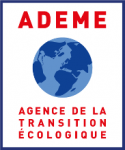 ADEME
ADEME  Groupe AFNOR - Association française de normalisation
Groupe AFNOR - Association française de normalisation  ONERA - The French Aerospace Lab
ONERA - The French Aerospace Lab  CESI
CESI 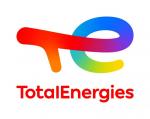 TotalEnergies
TotalEnergies  MabDesign
MabDesign  Aérocentre, Pôle d'excellence régional
Aérocentre, Pôle d'excellence régional  Tecknowmetrix
Tecknowmetrix 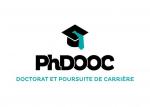 PhDOOC
PhDOOC  MabDesign
MabDesign  Institut Sup'biotech de Paris
Institut Sup'biotech de Paris 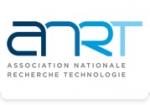 ANRT
ANRT  Généthon
Généthon  CASDEN
CASDEN  SUEZ
SUEZ  Nokia Bell Labs France
Nokia Bell Labs France  Ifremer
Ifremer  Laboratoire National de Métrologie et d'Essais - LNE
Laboratoire National de Métrologie et d'Essais - LNE  ASNR - Autorité de sûreté nucléaire et de radioprotection - Siège
ASNR - Autorité de sûreté nucléaire et de radioprotection - Siège

